
In 1943 Canada manufactured 188 M4A1 Grizzly cruiser tanks at the Montreal Locomotive Works facility in Montreal, Quebec. These tanks were basically Canadian versions of the M4A1 Sherman but built with British/Canadian style stowage and radios. The tanks followed the Ram Mark 2 on the production line and were intended to bolster production numbers of the new M4 series of tanks at a time when there were concerns that US industry was not capable of producing sufficient numbers of the vehicles. Shortly after production of the vehicles began, it was decided that production at Montreal was better focused on the Sexton self-propelled gun that shared the chassis and driveline of the Grizzly, so after a limited production run the Grizzly line was shut down.
The Canadian Army accepted the Grizzly tank for training vehicles in Canada and a number were issued at the Armoured Corps training centres at Camp Borden and Camp Meaford to replace the obsolete Ram tanks then still in use. After the end of the Second World War, the Grizzly tanks were retained as training tanks and a number were distributed to reserve armoured regiments across the country. These tanks remained in use until they were gradually replaced by the M4A2(76)W Sherman’s that were acquired from the United States in 1945.
In Canadian service the Grizzly design saw few modifications. Noteworthy are the Grizzly Skink, an Anti-Aircraft tank of which three were built, the Grizzly Firefly, with 17 pounder main gun replacing the 75mm, (of which only one is known to have been assembled), and the Grizzly “Kangaroo” armoured personnel carrier (APC). The APC’s were postwar conversions of Grizzly Cruiser tanks to carry 11 infantry soldier by means of removing their turrets and ammunition storage. Of these conversions, only fifty-five are recorded as being in inventory in 1955.
It is believed there may be one more variant of the Grizzly but little is currently known about it.
In 1955, Canada also identified six M4A1 Observation Post (OP) tanks as being surplus to our needs and available to NATO partners. These OP tanks were described as having their main guns removed and extra radios and communications equipment added to facilitate forward observation duties by artillery units. Unfortunately, the document does not elaborate on if they are M4A1 Grizzly or Sherman OP’s but the date of the document and quantity listed suggests Grizzly. Further research is required into these vehicles.
In the same year, Canada had identified its inventory of M4A1 tanks as being surplus to requirements and had offered over 100 of them to NATO partners in the 1955-56 Mutual Aid program. Although there were initially no takers, Portugal eventually expressed an interest and accepted 55 Grizzly Armoured Personnel Carriers and 58 Grizzly Cruiser tanks. Interestingly Portugal only expressed interest in the APCs but appear to have been convinced to accept the cruiser tanks as well due to the ease in which they could be converted to APC’s. Canada also offered to perform the work prior to delivery. Also offered as part of the 1955-56 Mutual Aid, were six M4A1 OP tanks, which were requested by Italy, but additional details are scarce. Three Grizzly tanks were preserved in Canada as monuments, two 75mm gun tanks and one Firefly were preserved at Camp Borden. Lastly, one cutaway instructional turret with 75mm gun was discovered in a scrapyard in the 1980’s as well as four un-machined Skink turret castings, all recovered from firing ranges.
Once in Portugal, the Grizzly tanks and APC’s saw limited use and most were held in storage depots. By the 1980’s, the collectors market in military vehicles was active and slightly fewer than 40 gun tanks were exported to England where the majority were sold to collectors and museums. Ten of the tanks that did not find buyers sold to the Ministry of Defence for use as hard targets. At least six of these were either diverted from their intended use or subsequently recovered from firing ranges and have been preserved. In the 1990’s a few more tanks, including APC’s, were exported from Portugal for the collectors market. The remaining tanks and APC’s held in storage near Lisbon were believed to have been scrapped in 1995, with only a small number of gun tanks being preserved in Portuguese museums.
Today, the Grizzly is one of the more common M4 tank models in preservation, with examples held in museums and private collections around the world. They have been seen in numerous television and film productions, due to their similarity to the Sherman and they will continue to be one of Canada’s understated contributions to the Second World War.
Grizzly Serial Numbers
This list includes the 188 Grizzly tanks built by Montreal Locomotive Works (MLW) in 1943. Each tank had a “Shop Number” assigned to it by MLW, beginning with 1 through to 188 that was stamped into the hull on the bow plate . These vehicles were also assigned War Department numbers in two blocks. CT-160194 to CT-160297 and then CT-163911 to CT-164012. These numbers were sometimes painted on the outside of the hulls but were regularly stamped into the serial number location on the dataplate. The DND numbers for the vehicles are at times painted on the outside of the hulls but were also regularly stamped onto the dataplate. Unfortunately, the DND numbering rationale is not known for these tanks at this time, but analysis of known DND numbers does show a considerable trend towards a basically linear assignment with few voids. Further research into the assignment of DND numbers for the Grizzly is required.
| Shop Number | WD Number | DND Number | Image/ Notes |
| 1 | 160194 | 75-988 | 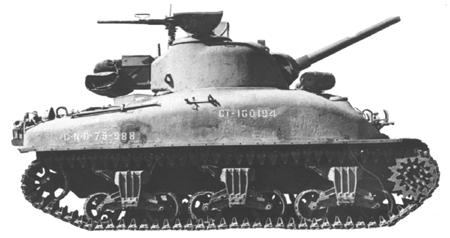 ( DND Image)  ( DND Image) 1956: Transferred to Portugal under NATO Mutual Aid. 1982: Brought to UK for sale to collectors market. |
| 2 | 190195 | ||
| 3 | 190196 | ||
| 4 | 190197 | ||
| 5 | 190198 | ||
| 6 | 160199 | 75-993 |  Dataplate (Courtesy Pierre-Olivier) 1956: Transferred to Portugal under NATO Mutual Aid 1982: Brought to UK for sale to collectors market. |
| 7 | 160200 | ||
| 8 | 160201 | ||
| 9 | 160202 | ||
| 10 | 160203 | ||
| 11 | 160204 | ||
| 12 | 160205 | ||
| 13 | 160206 | Preserved as monument vehicle Camp Borden. | |
| 14 | 160207 | ||
| 15 | 160208 | ||
| 16 | 160209 | ||
| 17 | 160210 | ||
| 18 | 160211 | 1956: Transferred to Portugal under NATO Mutual Aid 1982: Brought to UK for sale to collectors market. Circa 1984: Transferred to Ministry of Defence as a Hard Target. | |
| 19 | 160212 | ||
| 20 | 160213 | ||
| 21 | 160214 | ||
| 22 | 160215 | ||
| 23 | 160216 | ||
| 24 | 160217 | ||
| 25 | 160218 | 1956: Transferred to Portugal under NATO Mutual Aid 1982: Brought to UK for sale to collectors market. Circa 1984: Transferred to Ministry of Defence as a Hard Target. Circa 1991 : Recovered from the Sennybridge Range and preserved at the Tank Museum Bovington. | |
| 26 | 160219 | ||
| 27 | 160220 | ||
| 28 | 160221 | ||
| 29 | 160222 | ||
| 30 | 160223 | 1956: Transferred to Portugal under NATO Mutual Aid 1982: Brought to UK for sale to collectors market. | |
| 31 | 160224 | ||
| 32 | 160225 | ||
| 33 | 160226 | ||
| 34 | 160227 | ||
| 35 | 160228 | ||
| 36 | 160229 | ||
| 37 | 160230 | ||
| 38 | 160231 | ||
| 39 | 160232 | ||
| 40 | 160233 | Circa 1947: Converted to Grizzly APC. 1956: Transferred to Portugal under NATO Mutual Aid. 1994: Recovered from Bierolas Depot near Lisbon and imported to Europe. Unknown Date: Restored to Cruiser tank configuration using the turret from an ex. French Army M4 with French language placards still in place on the inside. This vehicle retains the Infantry hand holds on the hull from its time as an APC. | |
| 41 | 160234 | ||
| 42 | 160235 | 62-646 | 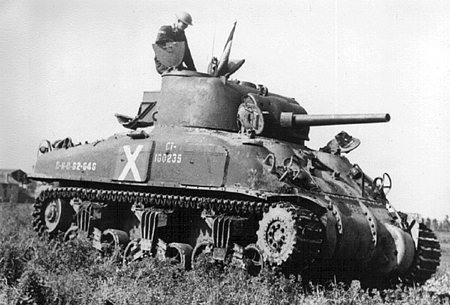 ( DND Image) 1945: Camp Meaford. |
| 43 | 160236 | 1956: Transferred to Portugal under NATO Mutual Aid. 1982: Brought to UK for sale to collectors market. | |
| 44 | 160237 | ||
| 45 | 160238 | ||
| 46 | 160239 | 62-650 |  ( DND Image) 1945: Camp Meaford. |
| 47 | 160240 | ||
| 48 | 160241 | ||
| 49 | 160242 | ||
| 50 | 160243 | ||
| 51 | 160244 |  No. 51 being unloaded from the transporter at Dr, Gregg’s Workshop after arriving from the UK in 1983. (Waterloo County Museum And Archives) 1956: Transferred to Portugal under NATO Mutual Aid. 1982: Brought to UK for sale to collectors market. 1983: Imported into Canada by Dr, Bill Gregg. 1985: Acquired by the Royal Canadian Artillery Museum, Shilo, | |
| 52 | 160245 | 1956: Transferred to Portugal under NATO Mutual Aid. 1982: Brought to UK for sale to collectors market. Circa 1984: Transferred to Ministry of Defence as a Hard Target on Otturburn Ranges. | |
| 53 | 160246 | ||
| 54 | 160247 | ||
| 55 | 160248 | ||
| 56 | 160249 | ||
| 57 | 160250 | 62-677 | 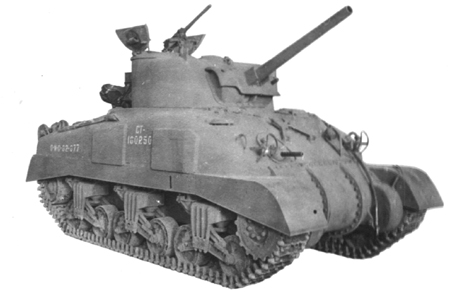 ( DND Image) 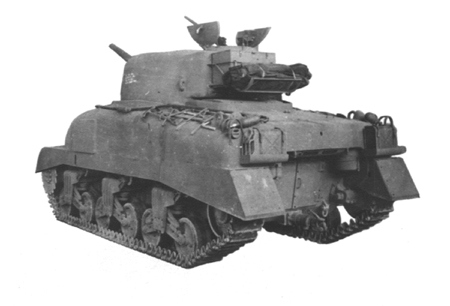 ( DND Image) |
| 58 | 160251 | ||
| 59 | 160252 | 1956: Transferred to Portugal under NATO Mutual Aid. 1982: Brought to UK for sale to collectors market. | |
| 60 | 160253 | ||
| 61 | 160254 | ||
| 62 | 160255 | ||
| 63 | 160256 | ||
| 64 | 160257 | ||
| 65 | 160258 | 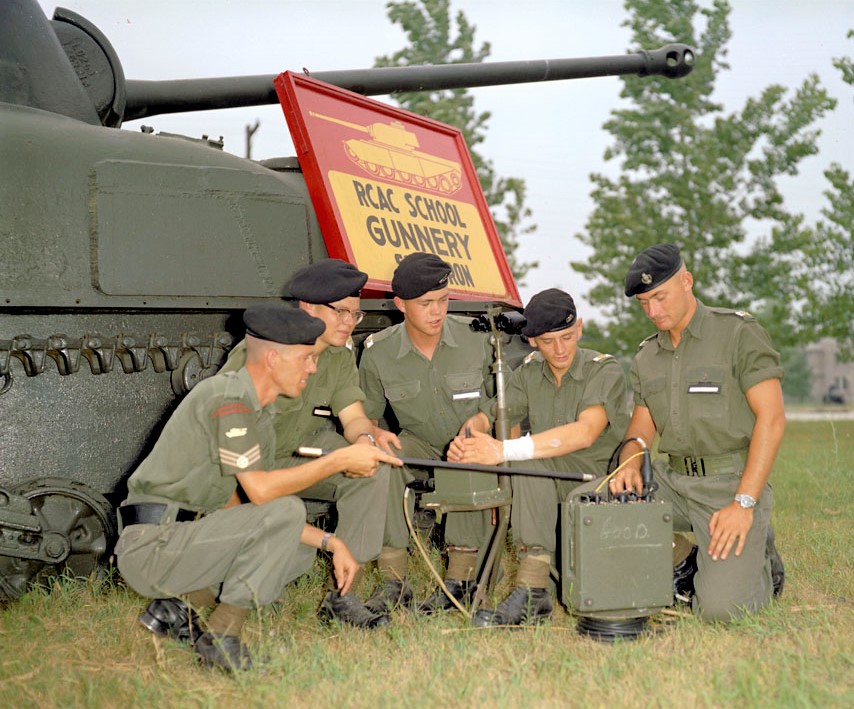 Early 1960’s while a monument at Camp Borden. The Cadets are examining the aiming unit for an ENTAC anti-tank missile. (Library and Archives Canada) 1945: Converted to Grizzly “Firefly” pilot model. Equipped with 17 Pdr. Preserved as monument vehicle Camp Borden. | |
| 66 | 160259 | ||
| 67 | 160260 | ||
| 68 | 160261 | 1956: Transferred to Portugal under NATO Mutual Aid. Preserved as a monument in Portugal. | |
| 69 | 160262 | 1956: Transferred to Portugal under NATO Mutual Aid. 1982: Brought to UK for sale to collectors market. | |
| 70 | 160263 | ||
| 71 | 160264 | ||
| 72 | 160265 | ||
| 73 | 160266 | ||
| 74 | 160267 | ||
| 75 | 160268 | ||
| 76 | 160269 | 1956: Transferred to Portugal under NATO Mutual Aid. 1982: Brought to UK for sale to collectors market. Circa 1984: Transferred to Ministry of Defence as a Hard Target on Otturburn Ranges. | |
| 77 | 160270 | ||
| 78 | 160271 | ||
| 79 | 160272 | ||
| 80 | 160273 | ||
| 81 | 160274 | ||
| 82 | 160275 | ||
| 83 | 160276 | ||
| 84 | 160277 | 1956: Transferred to Portugal under NATO Mutual Aid. 1982: Brought to UK for sale to collectors market. | |
| 85 | 160278 | ||
| 86 | 160279 | ||
| 87 | 163911 | ||
| 88 | 163912 | ||
| 89 | 163913 | ||
| 90 | 163914 | ||
| 91 | 163915 | 1956: Transferred to Portugal under NATO Mutual Aid. 1982: Brought to UK for sale to collectors market. Circa 1984: Transferred to Ministry of Defence as a Hard Target. | |
| 92 | 163916 | ||
| 93 | 163917 | 1956: Transferred to Portugal under NATO Mutual Aid. 1982: Brought to UK for sale to collectors market. | |
| 94 | 163918 | ||
| 95 | 163919 | ||
| 96 | 163920 | ||
| 97 | 163921 | ||
| 98 | 163922 | Preserved as monument vehicle Camp Borden. | |
| 99 | 163923 | 1956: Transferred to Portugal under NATO Mutual Aid. 1982: Brought to UK for sale to collectors market. | |
| 100 | 163924 | ||
| 101 | 163925 | ||
| 102 | 163926 | ||
| 103 | 163927 | ||
| 104 | 163928 | 1956: Transferred to Portugal under NATO Mutual Aid. 1982: Brought to UK for sale to collectors market. | |
| 105 | 163929 | ||
| 106 | 163930 | ||
| 107 | 163931 | ||
| 108 | 163932 | 62-728 |  ( DND Image) Aug. 1944: Converted to Skink Anti-Aircraft tank. Sept. 1945: Vehicle Proving Establishment, Ottawa for testing of Polsten feed mechanisms. 1946: Imaged at University Ave. Armouries in Toronto as part of “Army Days” display. Circa 1947: Converted to Grizzly APC. 1956: Transferred to Portugal under NATO Mutual Aid. |
| 109 | 163933 | ||
| 110 | 163934 | ||
| 111 | 163935 | ||
| 112 | 163936 | ||
| 113 | 163937 | ||
| 114 | 163938 | ||
| 115 | 163939 | ||
| 116 | 163940 | ||
| 117 | 163941 | ||
| 118 | 163942 | ||
| 119 | 163943 | 1956: Transferred to Portugal under NATO Mutual Aid. 1982: Brought to UK for sale to collectors market. | |
| 120 | 163944 | ||
| 121 | 163945 | ||
| 122 | 163946 | ||
| 123 | 163947 | ||
| 124 | 163948 | ||
| 125 | 163949 | 1956: Transferred to Portugal under NATO Mutual Aid. 1982: Brought to UK for sale to collectors market. | |
| 126 | 163950 | ||
| 127 | 163951 | ||
| 128 | 163952 | ||
| 129 | 163953 | ||
| 130 | 163954 | ||
| 131 | 163955 | ||
| 132 | 163956 | ||
| 133 | 163957 | ||
| 134 | 163958 | 1956: Transferred to Portugal under NATO Mutual Aid. 1982: Brought to UK for sale to collectors market. Circa 1984: Transferred to Ministry of Defence as a Hard Target. | |
| 135 | 163959 | ||
| 136 | 163960 | ||
| 137 | 160961 | ||
| 138 | 160962 | ||
| 139 | 160963 | ||
| 140 | 163964 | ||
| 141 | 163965 | ||
| 142 | 163966 | ||
| 143 | 163967 | ||
| 144 | 163968 | ||
| 145 | 163969 | ||
| 146 | 163970 | ||
| 147 | 163971 | ||
| 148 | 163972 | ||
| 149 | 163973 | 62-769 | 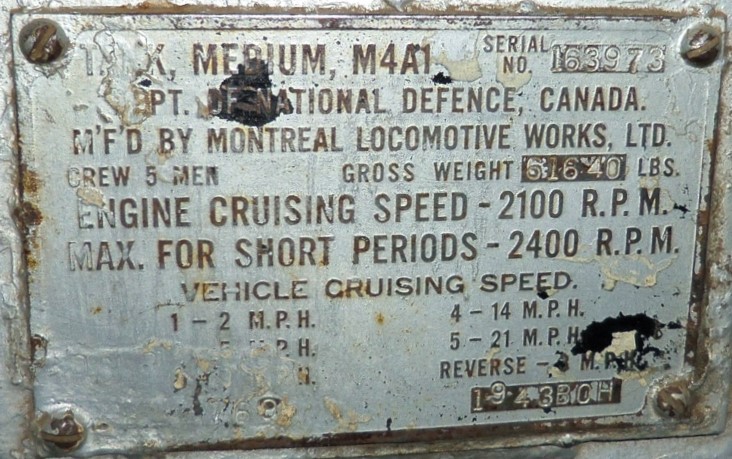 Dataplate (Courtesy Pierre-Olivier) 1956: Transferred to Portugal under NATO Mutual Aid. 1982: Brought to UK for sale to collectors market. |
| 150 | 163974 | ||
| 151 | 163975 | ||
| 152 | 163976 | ||
| 153 | 163977 | ||
| 154 | 163978 | ||
| 155 | 163979 | ||
| 156 | 163980 | ||
| 157 | 163981 | ||
| 158 | 163982 | ||
| 159 | 163983 | ||
| 160 | 163984 | ||
| 161 | 163985 | ||
| 162 | 163986 | ||
| 163 | 163987 | ||
| 164 | 163988 | ||
| 165 | 163989 | ||
| 166 | 163990 | 1956: Transferred to Portugal under NATO Mutual Aid. 1982: Brought to UK for sale to collectors market. | |
| 167 | 163991 | ||
| 168 | 163992 | ||
| 169 | 163993 | ||
| 170 | 163994 | ||
| 171 | 163995 | ||
| 172 | 163996 | ||
| 173 | 163997 | 62-793 |  Dataplate (Courtesy Pierre-Olivier) 1956: Transferred to Portugal under NATO Mutual Aid. 1982: Brought to UK for sale to collectors market. |
| 174 | 163998 | ||
| 175 | 163999 | ||
| 176 | 164000 | 1956: Transferred to Portugal under NATO Mutual Aid. 1982: Brought to UK for sale to collectors market. Circa 1984: Transferred to Ministry of Defence as a Hard Target. | |
| 177 | 164001 | ||
| 178 | 164002 | 1956: Transferred to Portugal under NATO Mutual Aid. 1982: Brought to UK for sale to collectors market. 2000: Acquired by the Canadian War Museum. | |
| 179 | 164003 | ||
| 180 | 164004 | ||
| 181 | 164005 | ||
| 182 | 164006 | ||
| 183 | 164007 | ||
| 184 | 164008 | ||
| 185 | 164009 | 1956: Transferred to Portugal under NATO Mutual Aid. 1982: Brought to UK for sale to collectors market. | |
| 186 | 164010 | ||
| 187 | 164011 | ||
| 188 | 164012 |
Grizzly Image Gallery
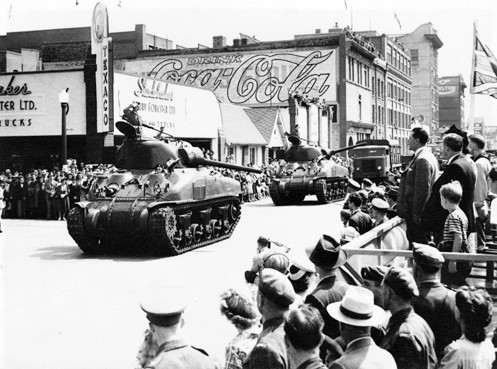
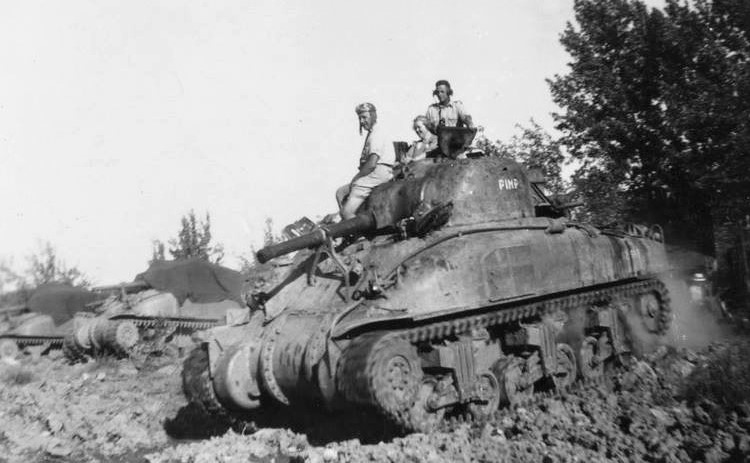
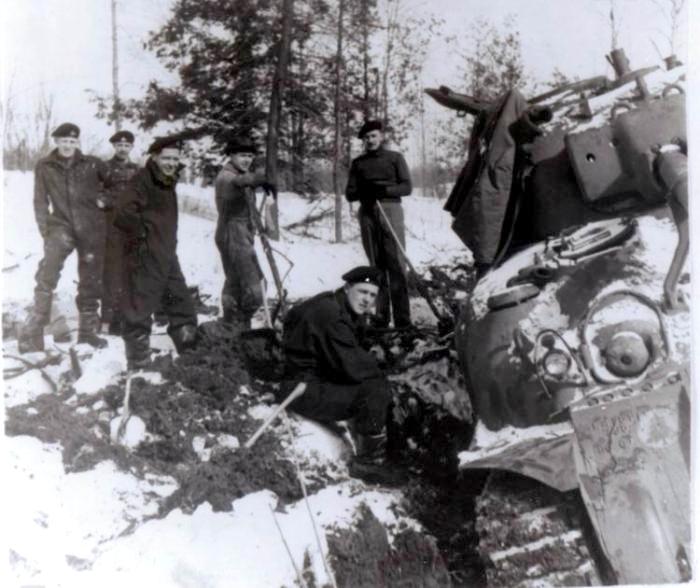
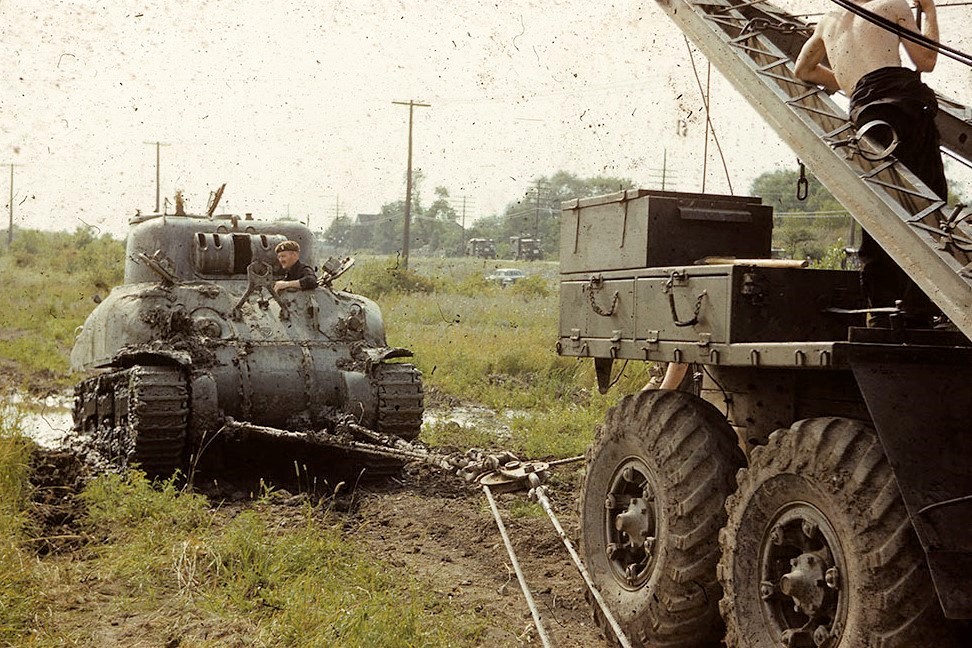
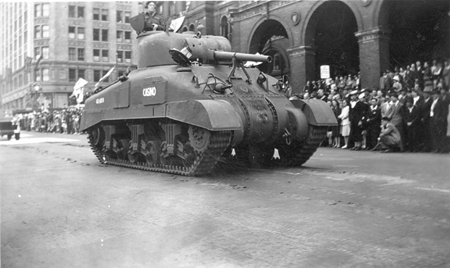


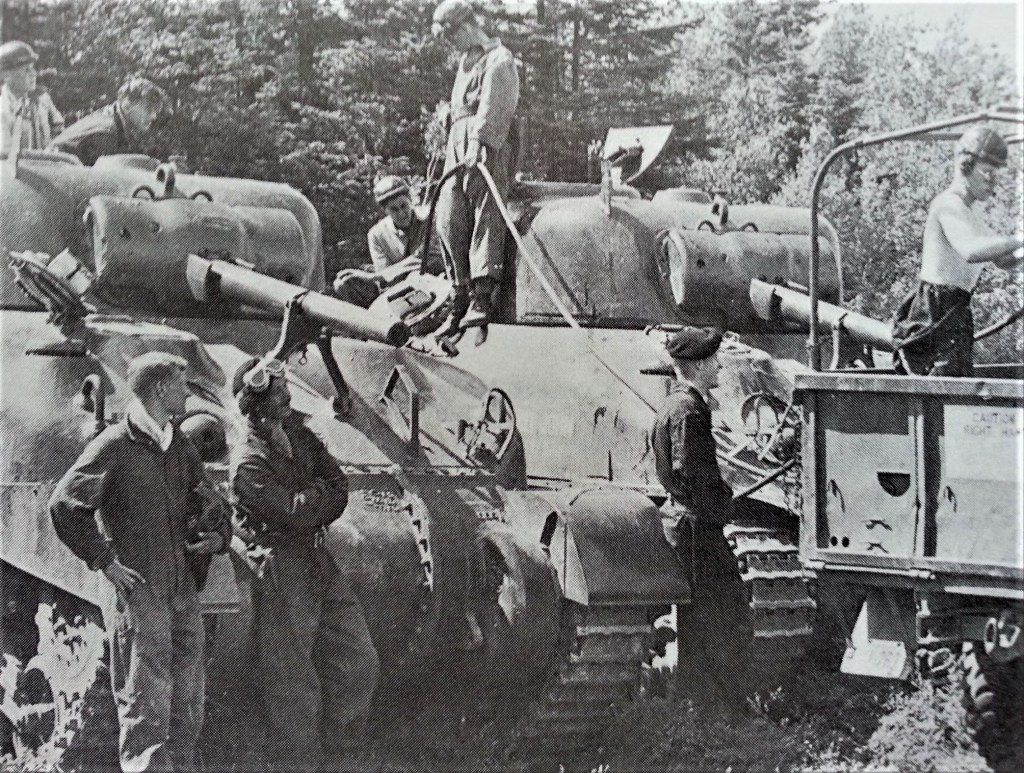



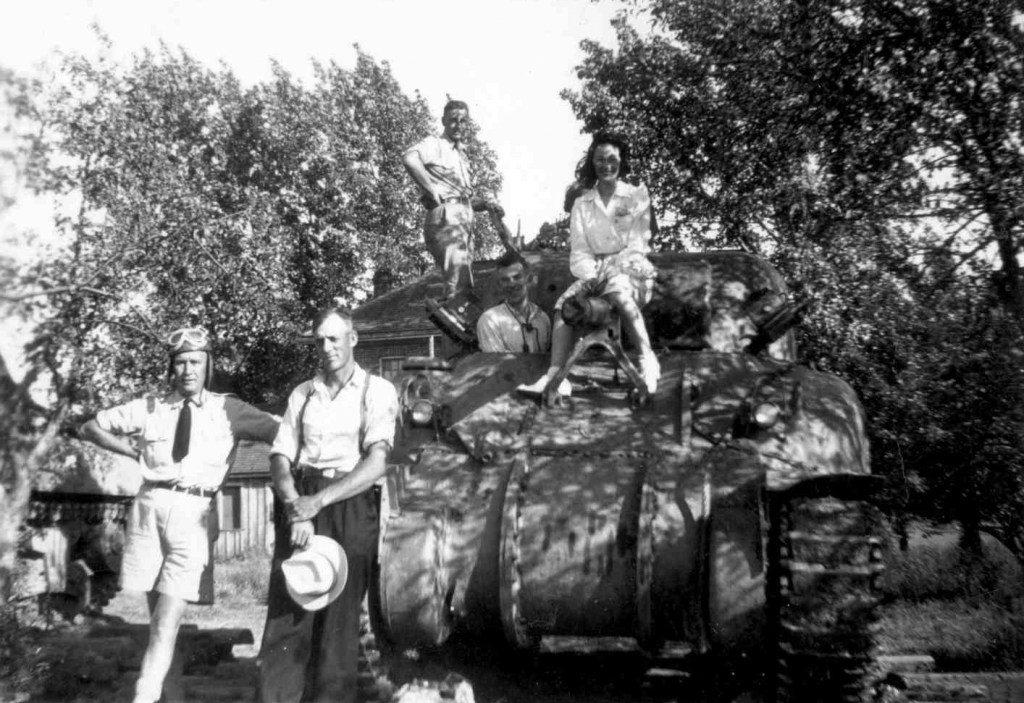
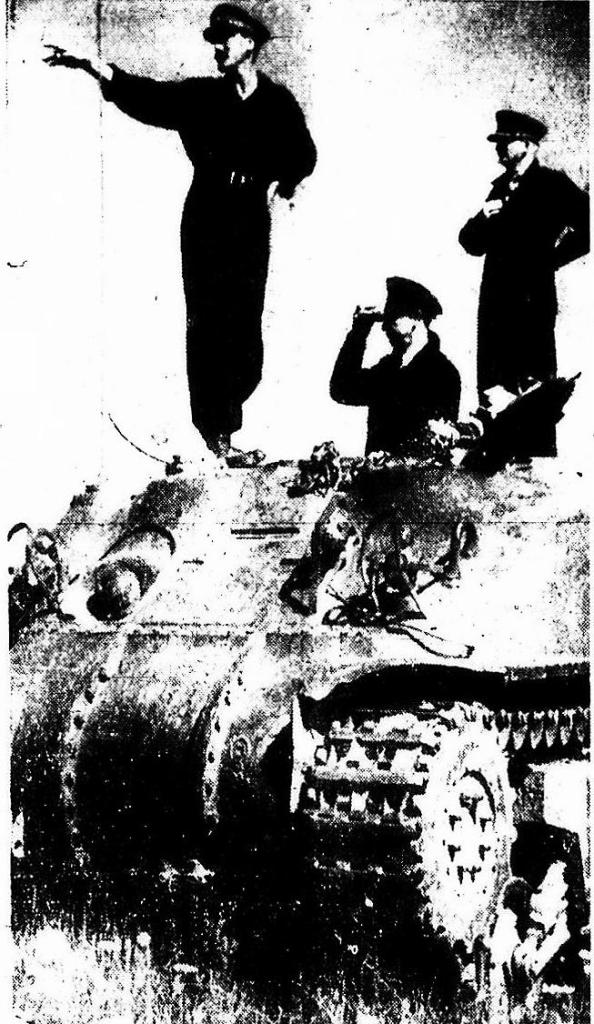
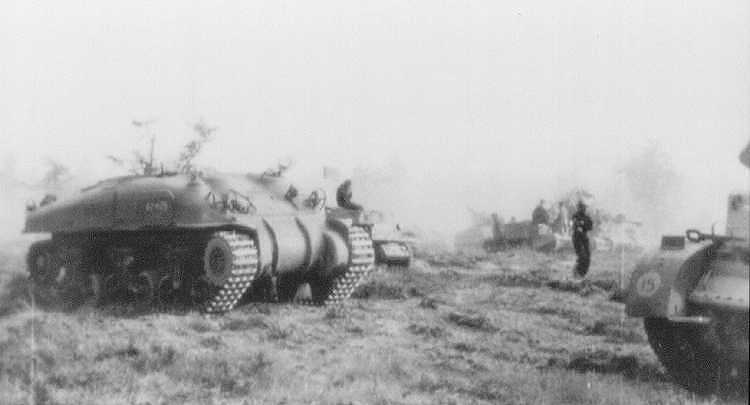

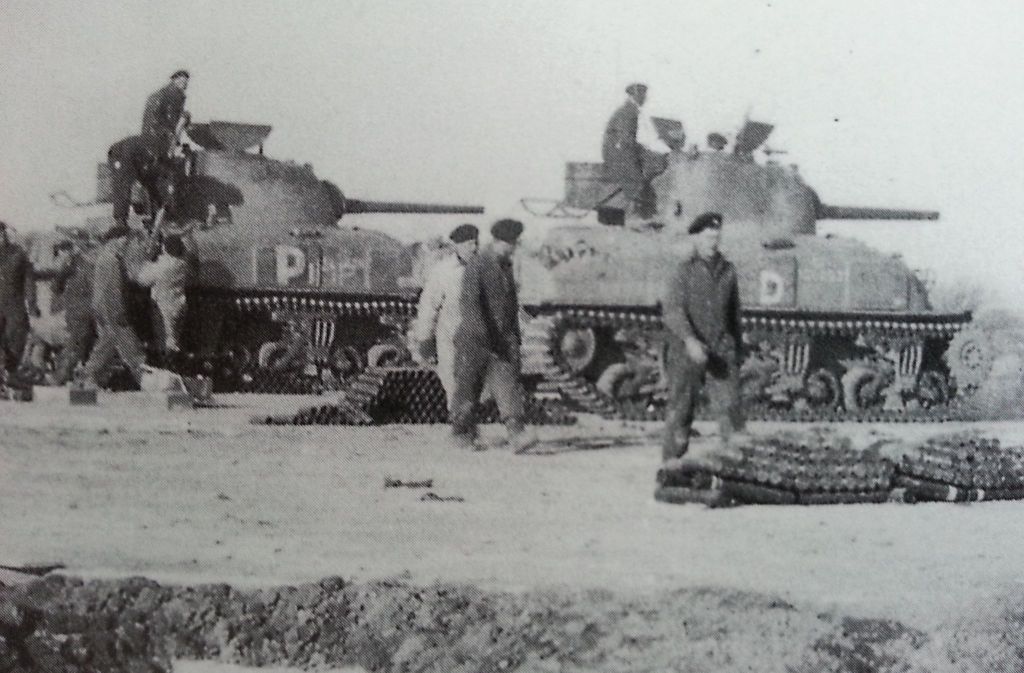

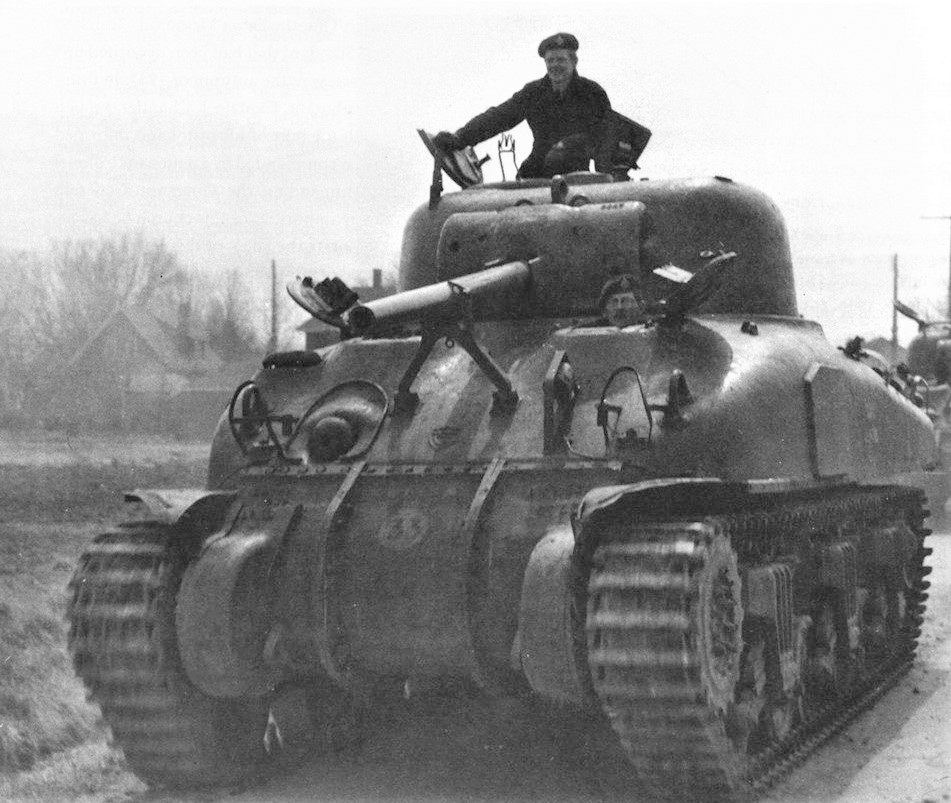
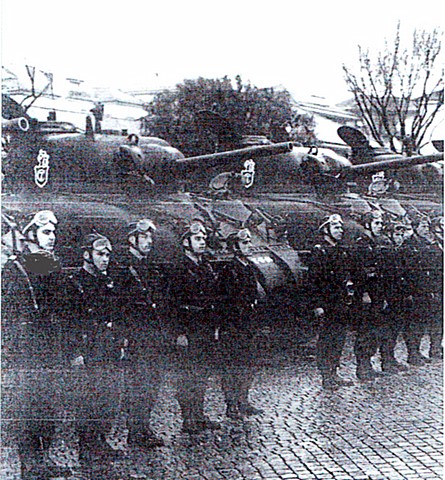
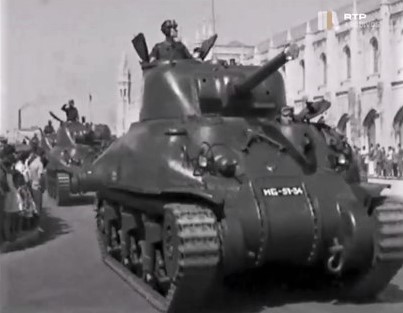
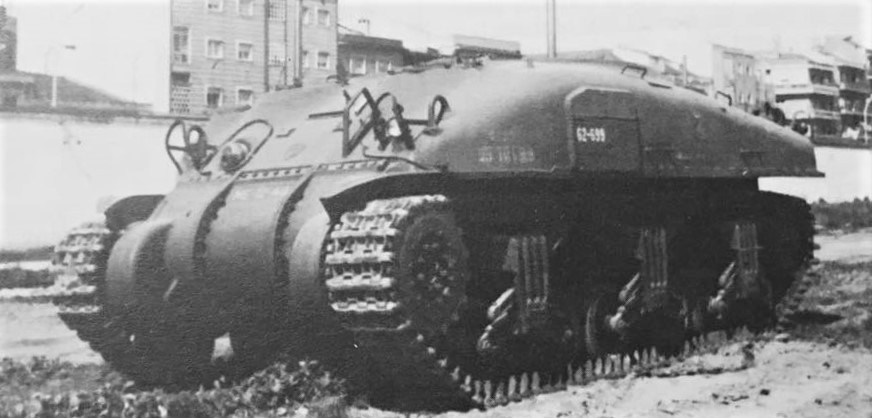


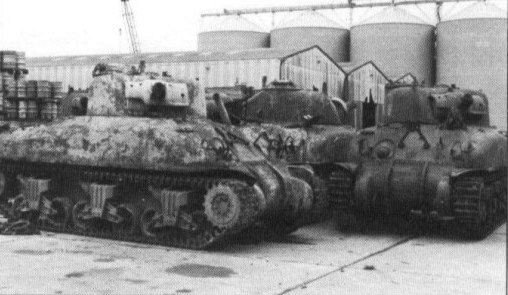
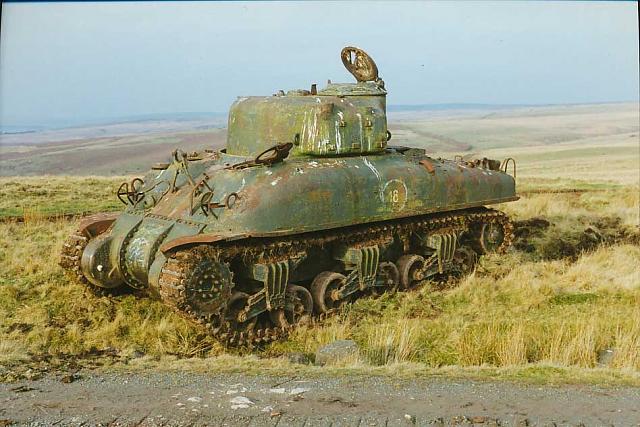
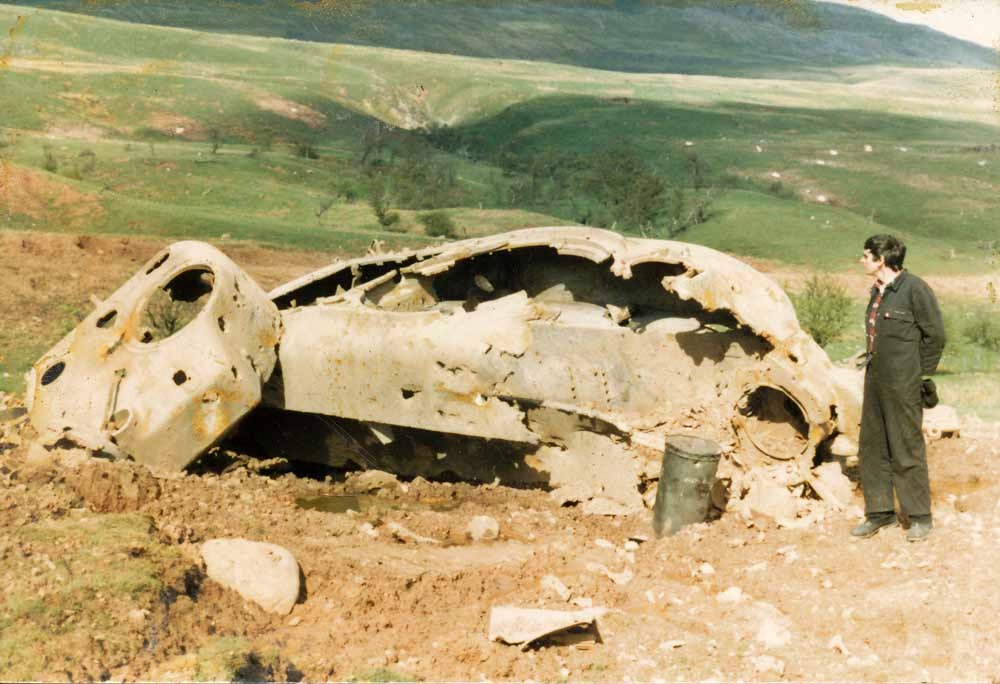
Skink Conversions
There is some contradictory information relating to Skink numbering. It has been reported that skink numbers 1 and 2 are DND 62-727 and 62-728 but it appears that this information was based on the late discovery of the image showing Skink 62-728 in Canada in 1946. The deduction was that if Skink 1 “SKC 1001” was shipped to the UK in 1944, then the tank imaged in Canada two years later must be number 2, readied for shipment but not delivered. The issue with this conclusion arises when an analysis of the features on each tank is performed. Tanks 1 and 2, seen at Waterloo Manufacturing, are both early hulls with no applique (assembled previous to MLW shop number 25) and the hull seen on 62-728 is a mid production hull with welded on applique plates (seen on tanks between MLW 26 and about 110). The DND number of 62-728 is correct for this mid-period of production. Observing that the DND numbers for Grizzly tanks are linear and basically sequential, indicates that the tanks with no applique armour must have a DND number in the 75-99X or 62-6XX blocks. To conclude that Waterloo number 1 has to be one DND number lower than the tank seen in 1946, appears incorrect. It is hopeful that additional research will allow a proper identification of all three Skink conversions but until such a time exists I have recorded the available information into the table below.
| Waterloo Shop No. | MLW Shop No. | “WD” No. | “DND” No. | Notes/ Image |
| 1 SKC1001 |  Number “1” seen at Waterloo in late January 1944 with an early cast turret that appears to be fabricated in a number of sections. Also note the Hispano Suiza Cannons. (DND Image) 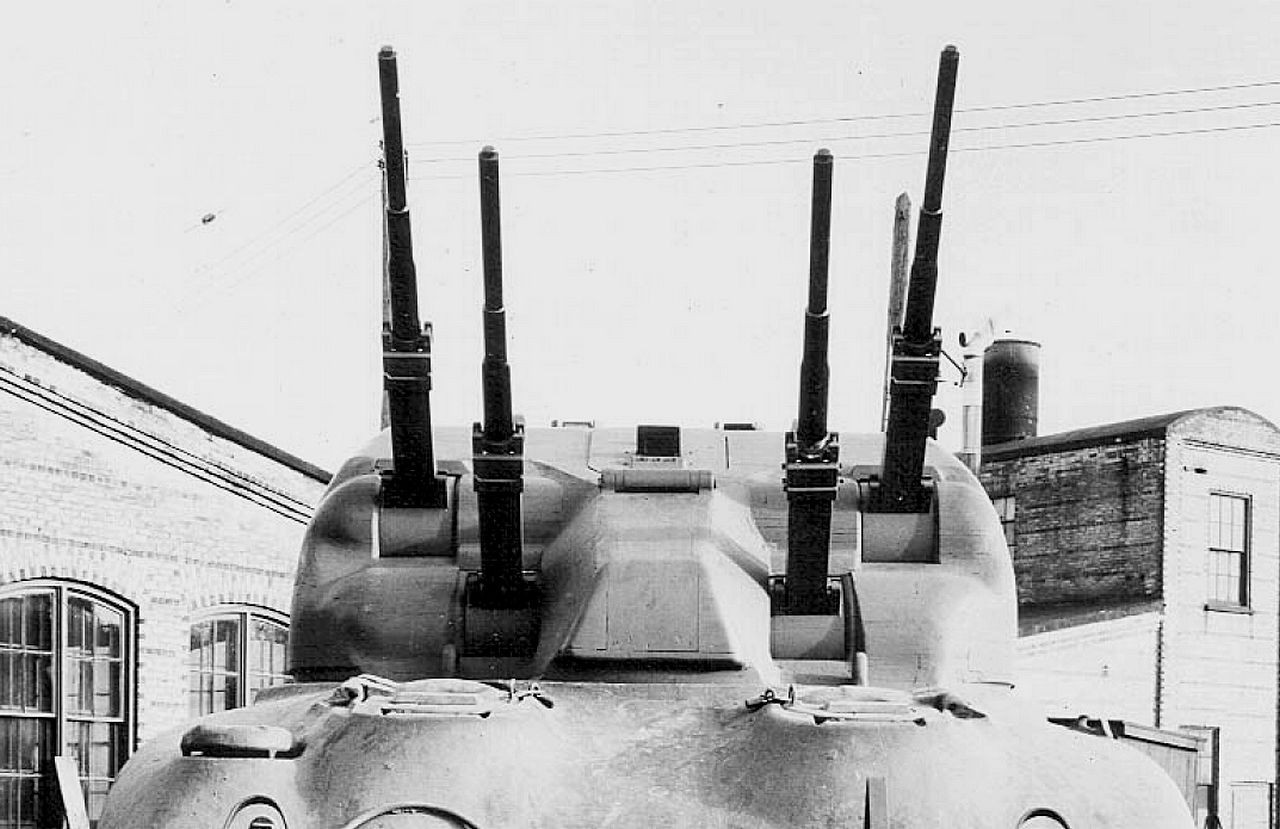 Detail of the exposed cannons and section lines in the turret of number “1” at Waterloo. (DND Image) 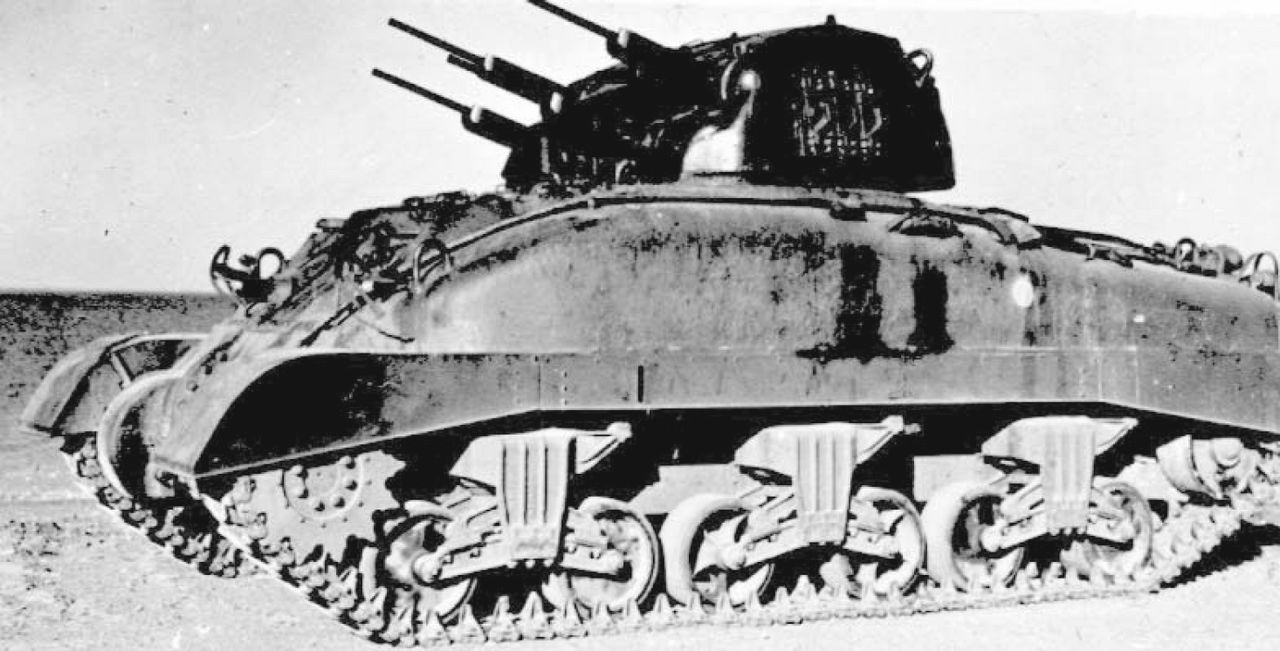 Number “1” seen at on the beach at what appears to be Long Branch Ontario in May 1944 with a modified turret to accept Polsten guns. The dark paint on the turret and armoured recoil mechanism protectors for the guns is evident. (DND Image) 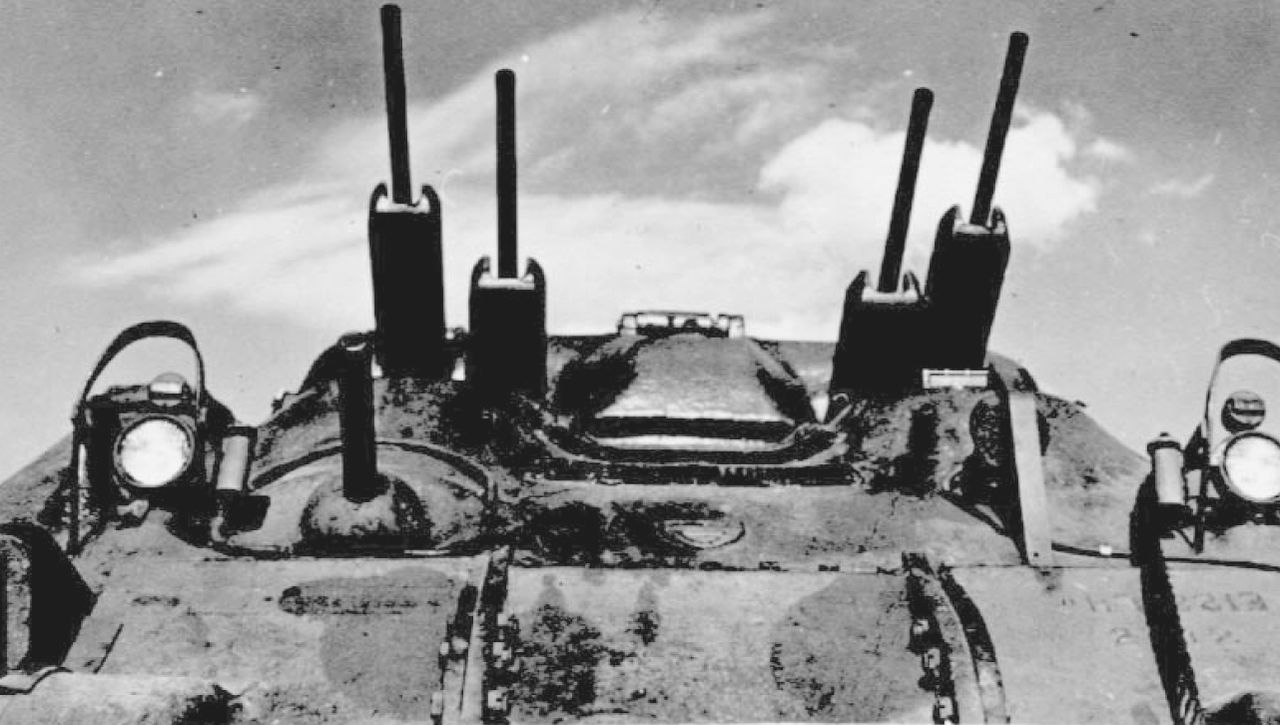 Detail of number “1” at what is believed to be Long Branch. The guns are now armoured and the hull is also now fitted with splash deflectors on the bow plate. (DND Image) 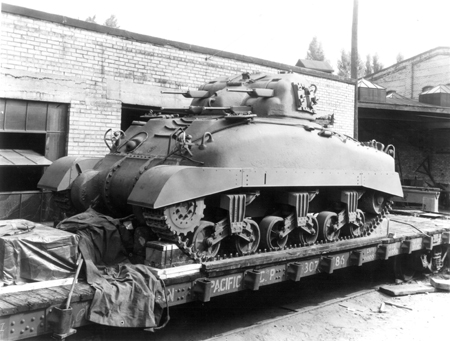 July 1944. Number “1” loaded on the rail car at Waterloo in its final configuration for shipment to Longue Point and then England. Note the CDP track with the mixture of roadwheels now fitted. (DND Image)  Winter 1944. Number “1” now marked “SKC 1001” at Lulworth Ranges in England. Still with CDP track. (DND Image) Early hull no applique. January 1944: Imaged at Waterloo in original configuration with Hispano Suiza cannons. May 1944: To Long Branch, Ontario for testing of Polstens cannons in modified early turret. Back at Waterloo Manufacturing for upgrade to late style turret, Polstens and CDP track. July 1944: Completed and readied for shipment to England. September 1944: Chobham, England for mechanical evaluation. October 1944: Lulworth Ranges in England for anti-aircraft testing. January 1945: Northwest Europe with No.1 Tank Demonstration Unit, First Canadian Army. Feb 6-11, 1945: Attached to the 1st Hussars for operational testing near Nijmegen. Feb. 11-19, 1945: Attached to the Fort Garry Horse for operational testing, Reichswald Forest, near Calcar and Cleve. Feb. 20-24, 1945 Attached to the Sherbrooke Fusiliers, East of Cleve Feb. 25-Mar.4, 1945: Attached to the Canadian Grenadier Guards, Hochwald area. Mar. 6-9, 1945: Attached to the Governor General’s Foot Guards, East of Uden to Winnethal. Mar. 10-11, 1945: Attached to the South Alberta Regiment, Sonsbeck. Aug. 1945: Transferred to British Army Inventory. | |||
| 2 | 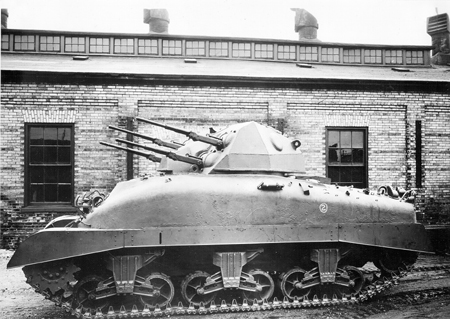 December 1943 at Waterloo Manufacturing Co. Note the early hull, welded turret with Hispano Suiza cannons, US track, and the shop number “2” in a circle on the hull side. (DND Image) 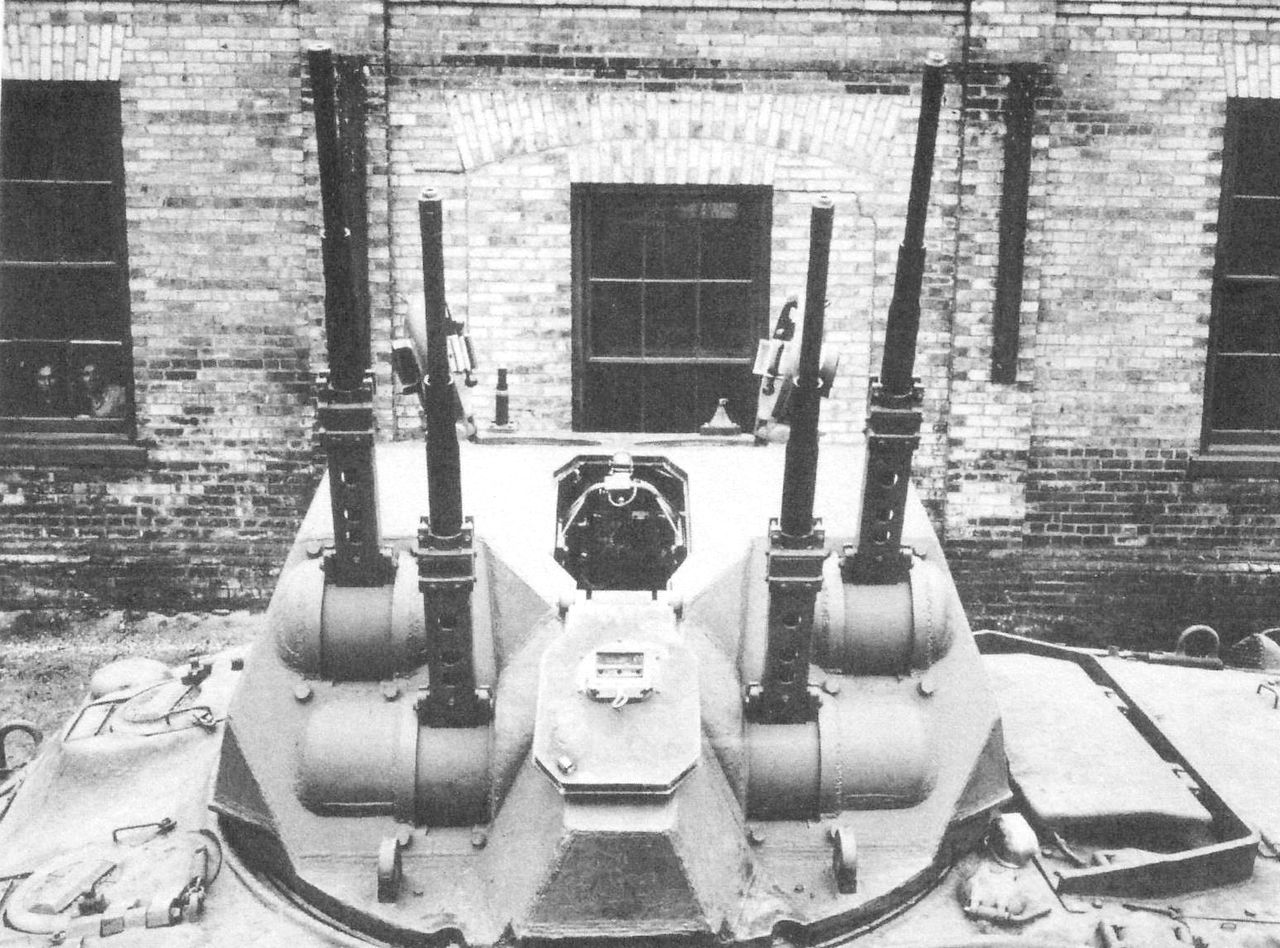 Detail of the welded turret and exposed guns on number “2”. Note the lack of splash deflectors on the bow plate (DND Image) Early hull no applique. December 1943: Imaged in Waterloo with US track and spoked road wheels. Welded turret and Hispano Suiza cannons. Spring 1945: Upgraded to a cast production model turret with Polsten Cannons. Summer 1945: Delivered to to Armoured Fighting Vehicle Establishment, Camp Borden. | |||
| 108 | 163932 | 62-728 | 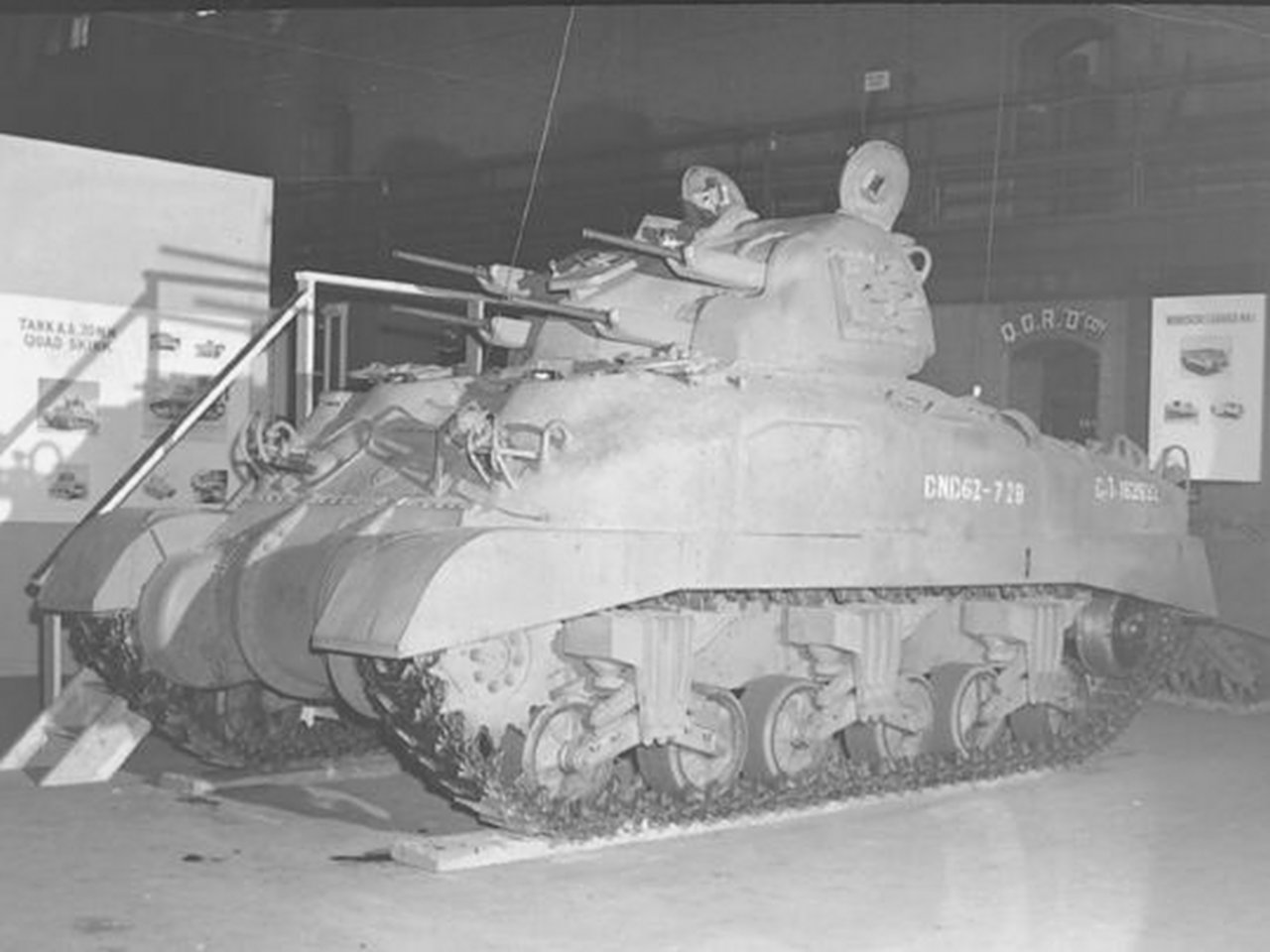 Seen on display in 1946 in Toronto showing both DND and WD numbers on the hull. Note the Splash deflectors on the hull bow plate and welded on applique plate on the hull side.(DND Image) 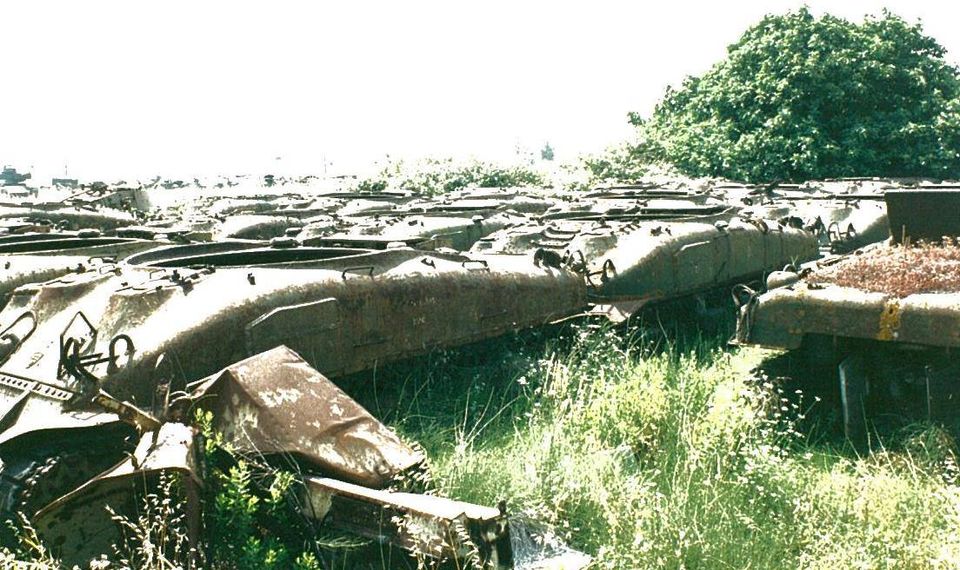 Seen (right) in 1994 in a Portuguese Army storage yard awaiting disposal. The distinctive splash deflectors and welded applique hull plates are evident. (Courtesy Luis Costa)  Detail of the same hull showing the distinctive CDP track. (Courtesy Luis Costa) Early hull with welded applique. August 1944: Approved for shipment to England but not shipped. August 1945: Vehicle Proving Establishment, Ottawa for testing of Polsten feed mechanisms. 1946: Imaged at University Ave. Armouries in Toronto as part of “Army Days” display. Fitted with solid road wheels and US track. Circa 1947: Converted to Grizzly APC. 1956: Transferred to Portugal under NATO Mutual Aid. 1994: Appears in storage in Portugal still as APC with CDP track. |
Skink Image Gallery
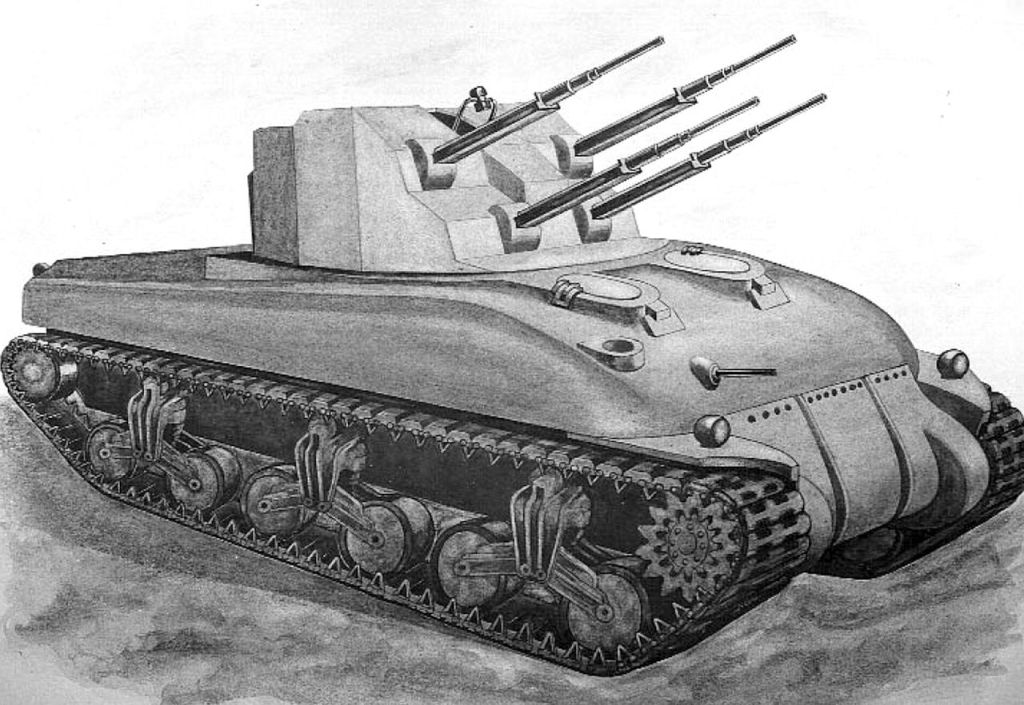
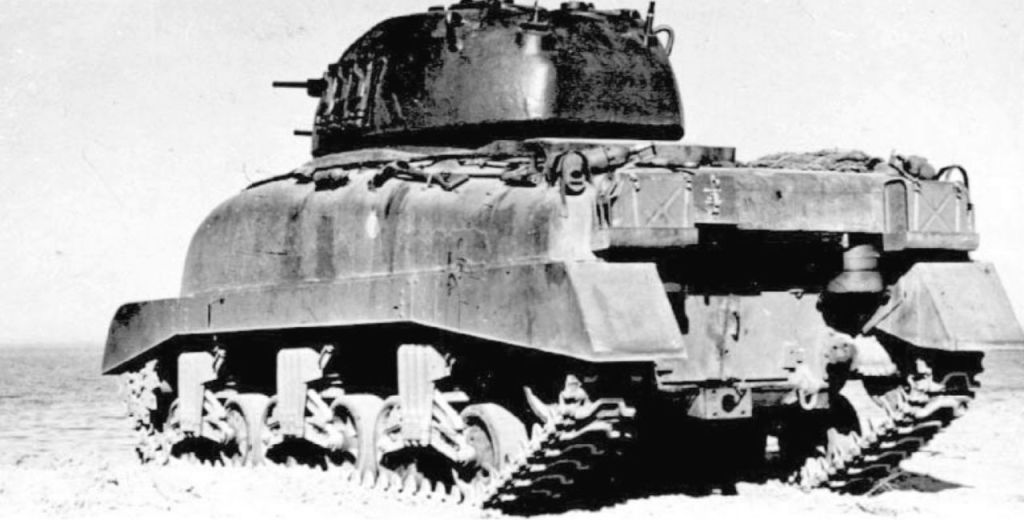
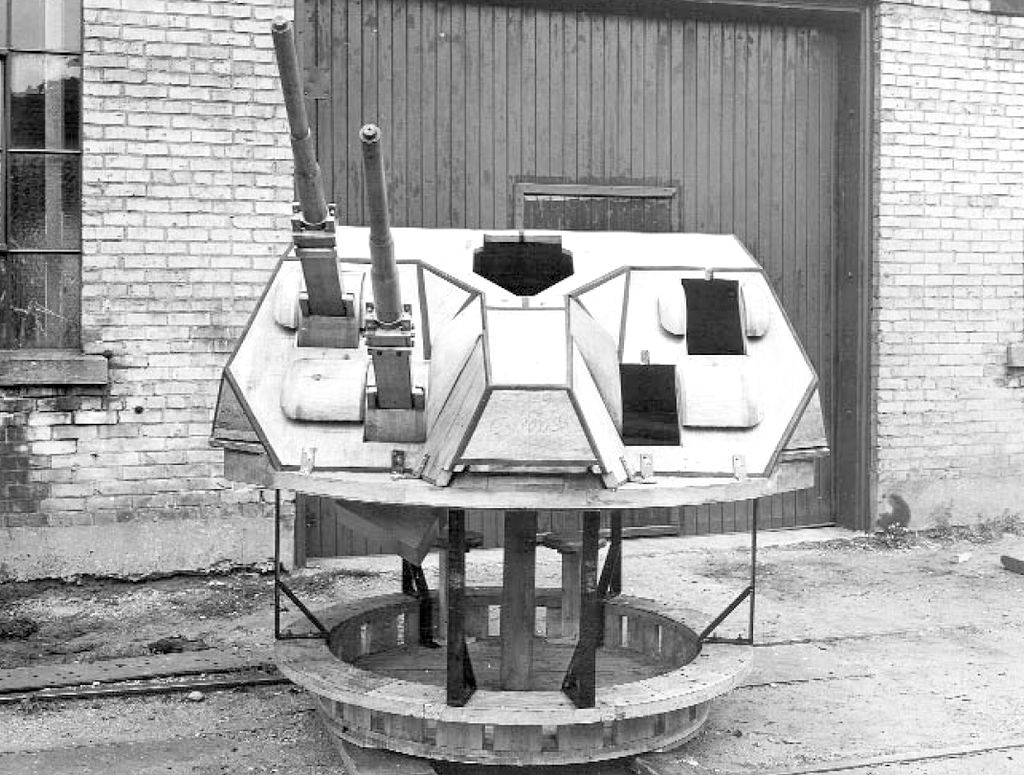


Skink Turret Survivors
At the end of the Skink project in 1945, a number of the remaining unfinished turrets produced by Dominion Foundry were disposed of as hard targets on anti-tank ranges. To date, four of these turrets are known to have survived with only one being on public display. The remainder are held by DND or museums in storage facilities.
| Casting Number | Image/Notes |
| 78 |  In Storage at CFB Shilo. The turret in the background is from a Ram tank. (Source Unknown) 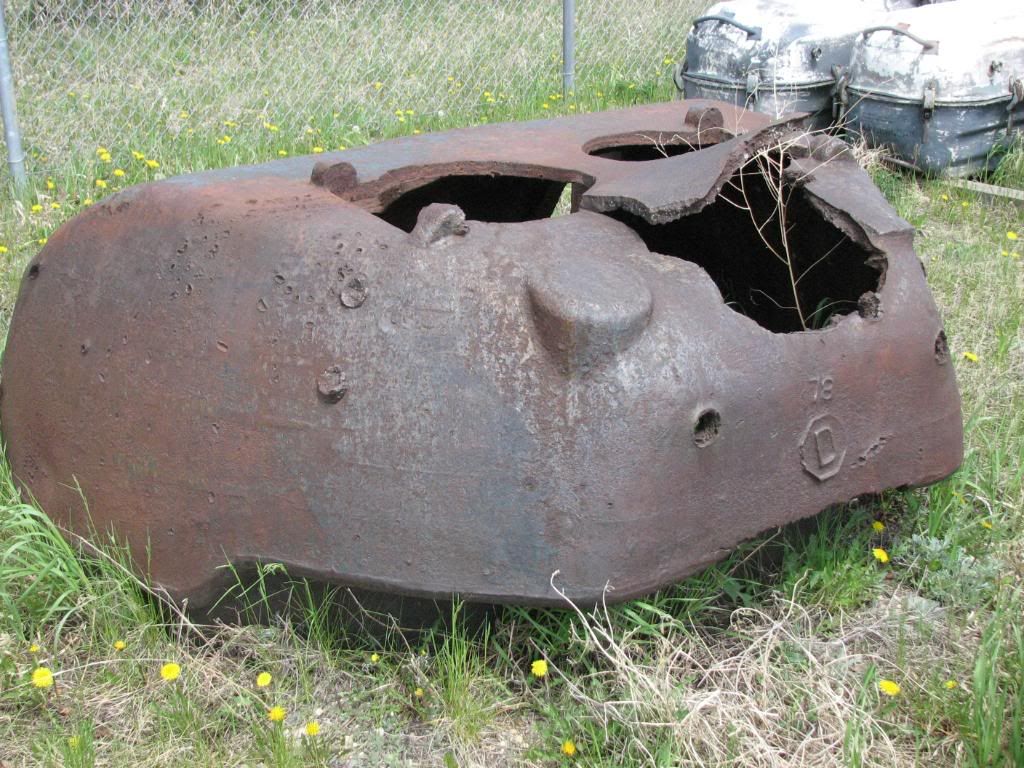 In Storage at CFB Shilo. Note Casting number at Anti-tank round penetrations. (Source Unknown) Late bustle Style. Not machined. Former hard target. Obtained by Dr. Bill Gregg from Canadian Army. 1985: Acquired by Royal Canadian Artillery Museum, Shilo. |
| 80 |  In storage at the CWM in 2010. (Source Unknown) 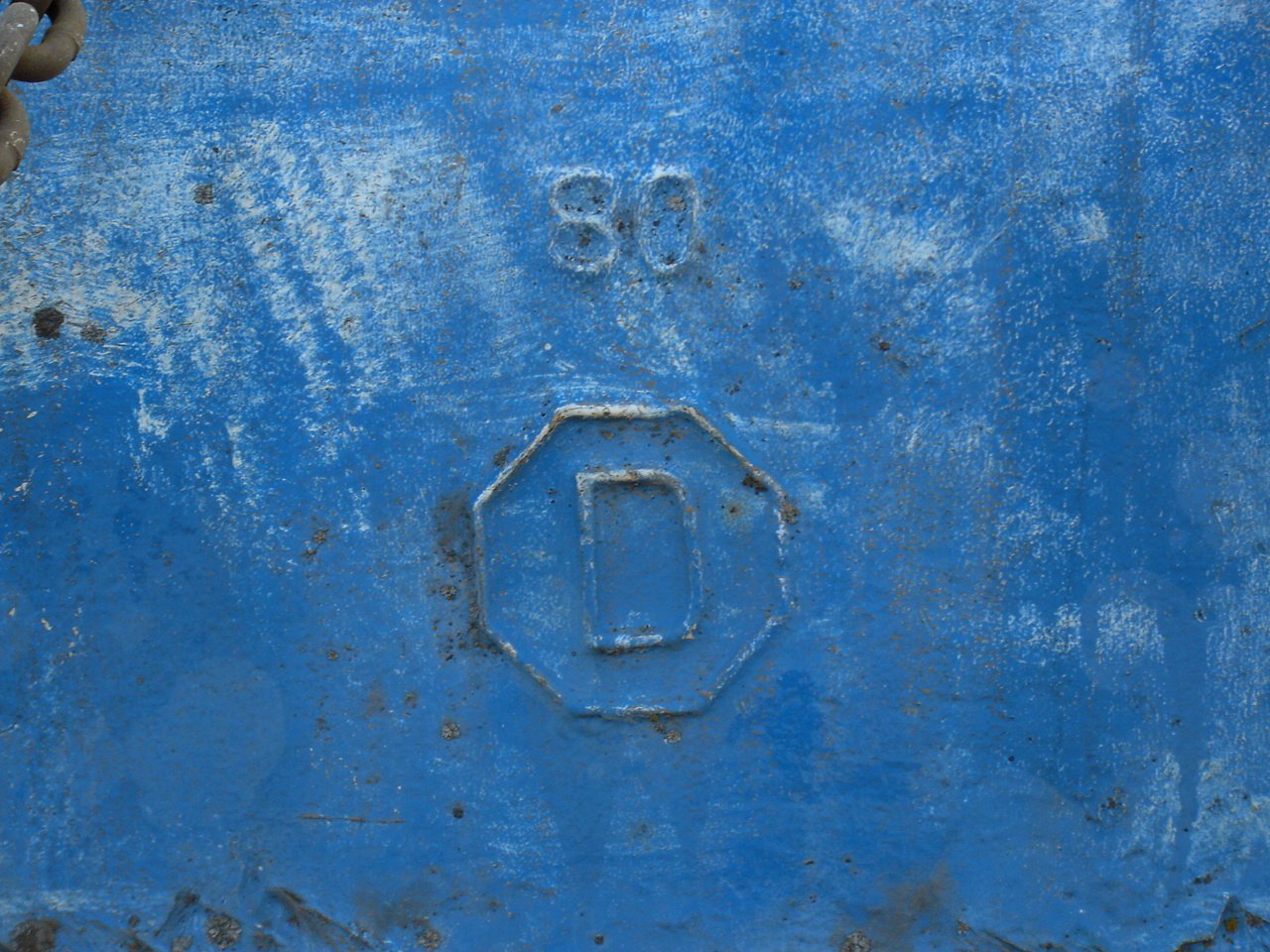 Casting number and Dominion Foundry mark on rear of CWM turret. (Courtesy Paul Heise) Late bustle style. Not machined. Former hard target and left arc marker at Glenemma Ranges, B.C. 2003: Recovered from the Vernon rifle range by Lord Strathcona’s Horse (RC) and transported to CFB Edmonton. 2009: Acquired by Canadian War Museum, Ottawa. |
| 81 | 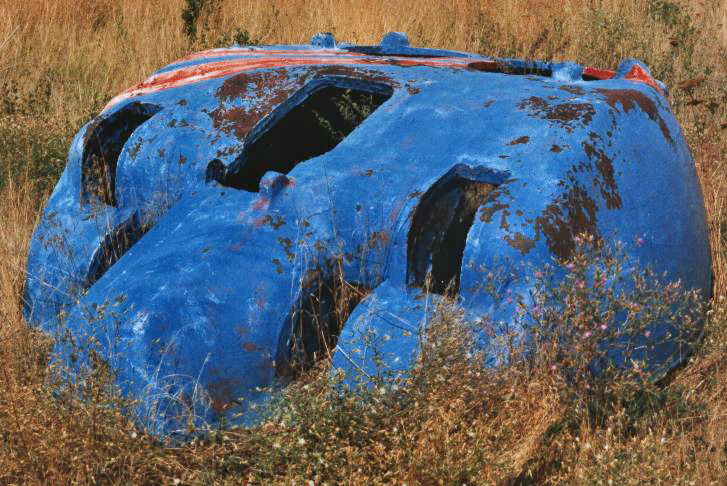 Seen while still at Camp Vernon. ( Courtesy Colin McGregor Stevens) Late bustle style. Not machined. Former hard target and right arc marker at Glenemma Ranges, B.C. 2003: Recovered from the Vernon rifle range by Lord Strathcona’s Horse (RC) and transported to CFB Edmonton. |
| UNK. |  A November 2016 dated image showing the turret as part of the War Memorial outside the Okanagan Indian Band, Band Office. (Courtesy the Senklip News and the Okanagan First Nation) Late bustle style. Not machined. Former hard target at Glenemma Ranges, B.C. Circa 2014: Placed on display as part of the Okanagan Indian Band War Memorial. Vernon, BC. |
Skink Turret Gallery
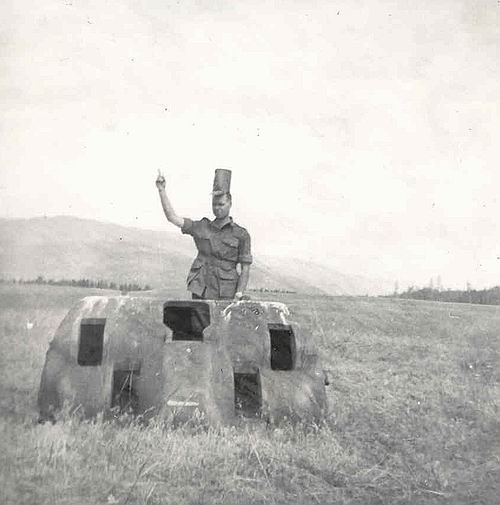
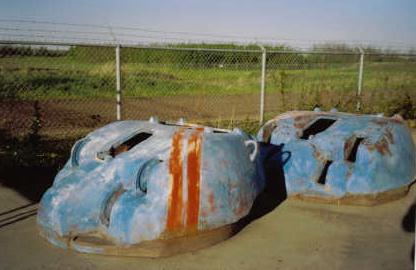
Sources
Roger Lucy, The Skink in Canadian Service, Service Publications, 2005
Pierre-Olivier, Surviving Panzers, website. http://the.shadock.free.fr
Acknowledgments
A special tanks must go to Hanno Spolestra, Roger Lucy, Anthony Sewards, and Bob Grundy and Rick Wedlock for their assistance with information and images contained within this article.